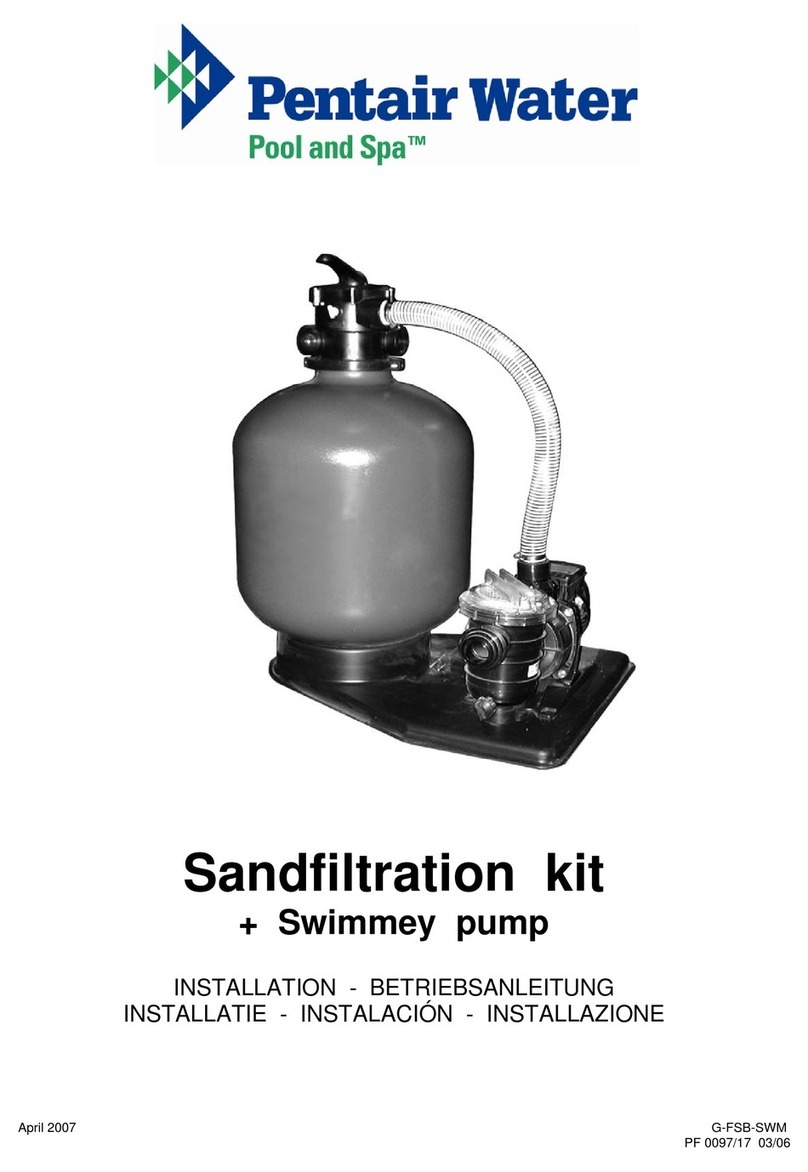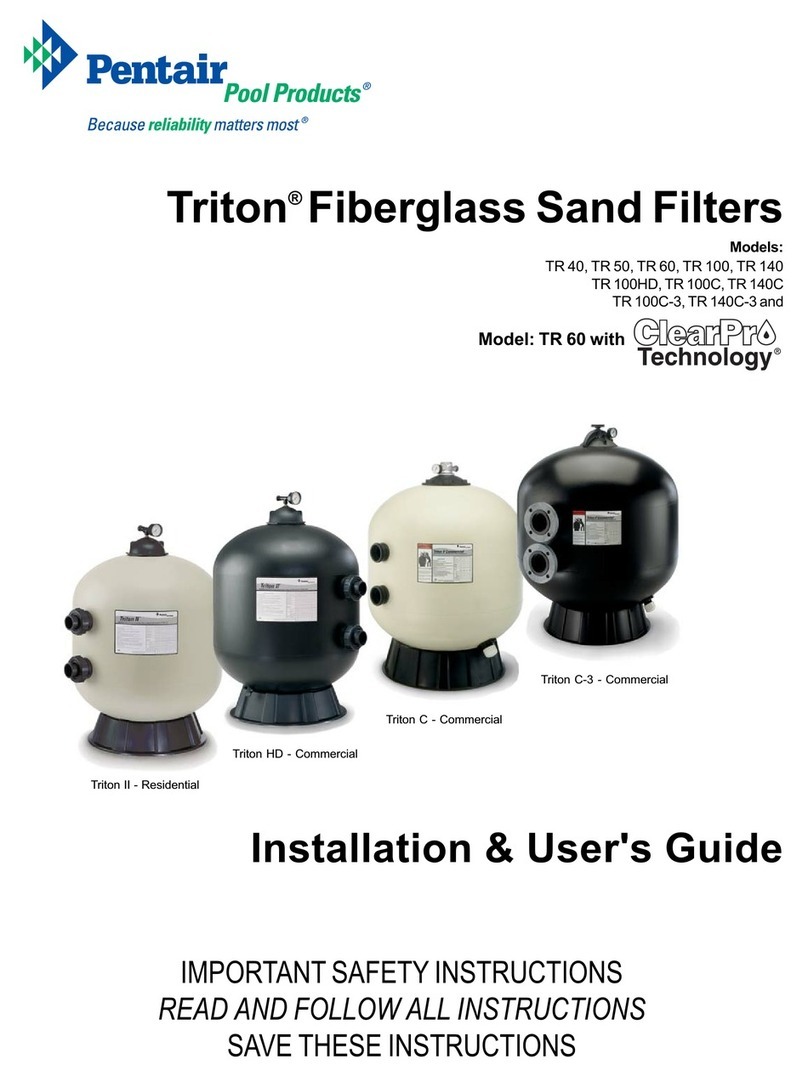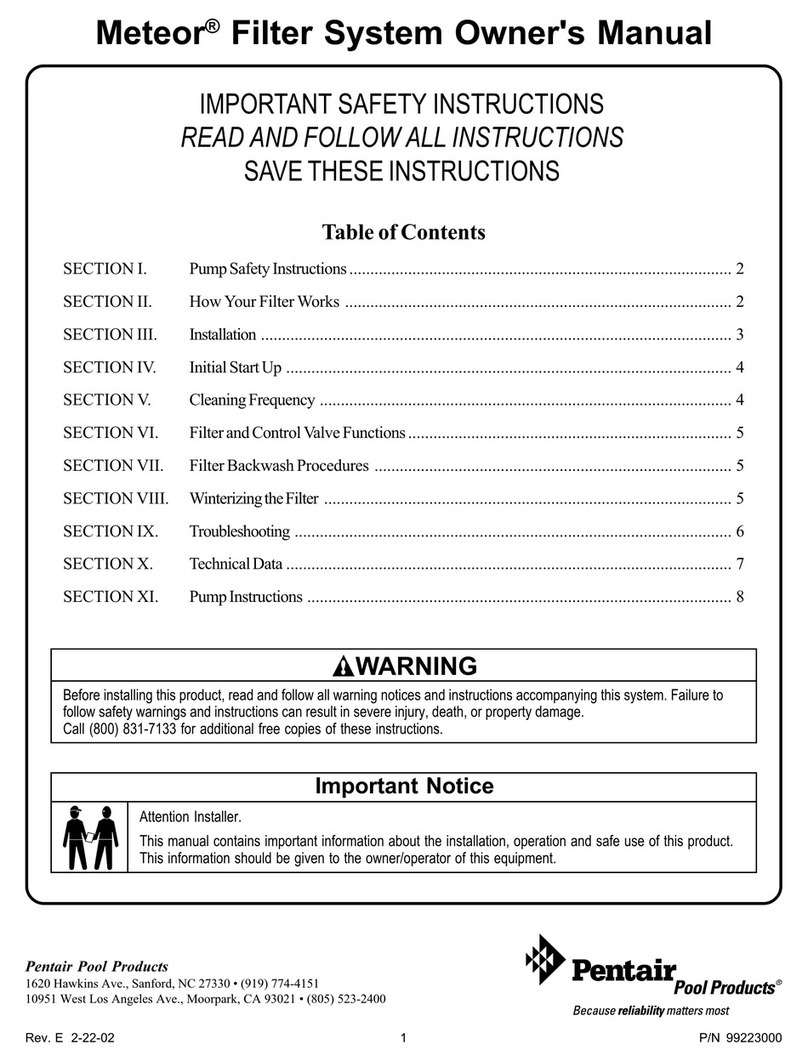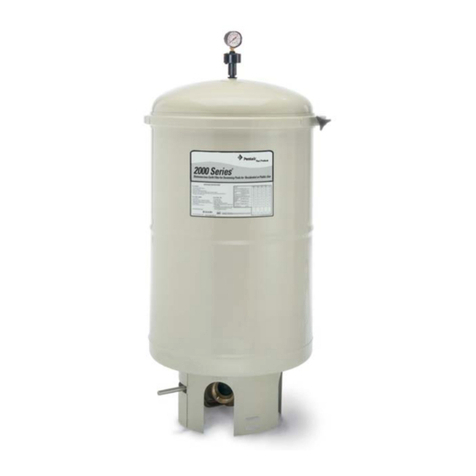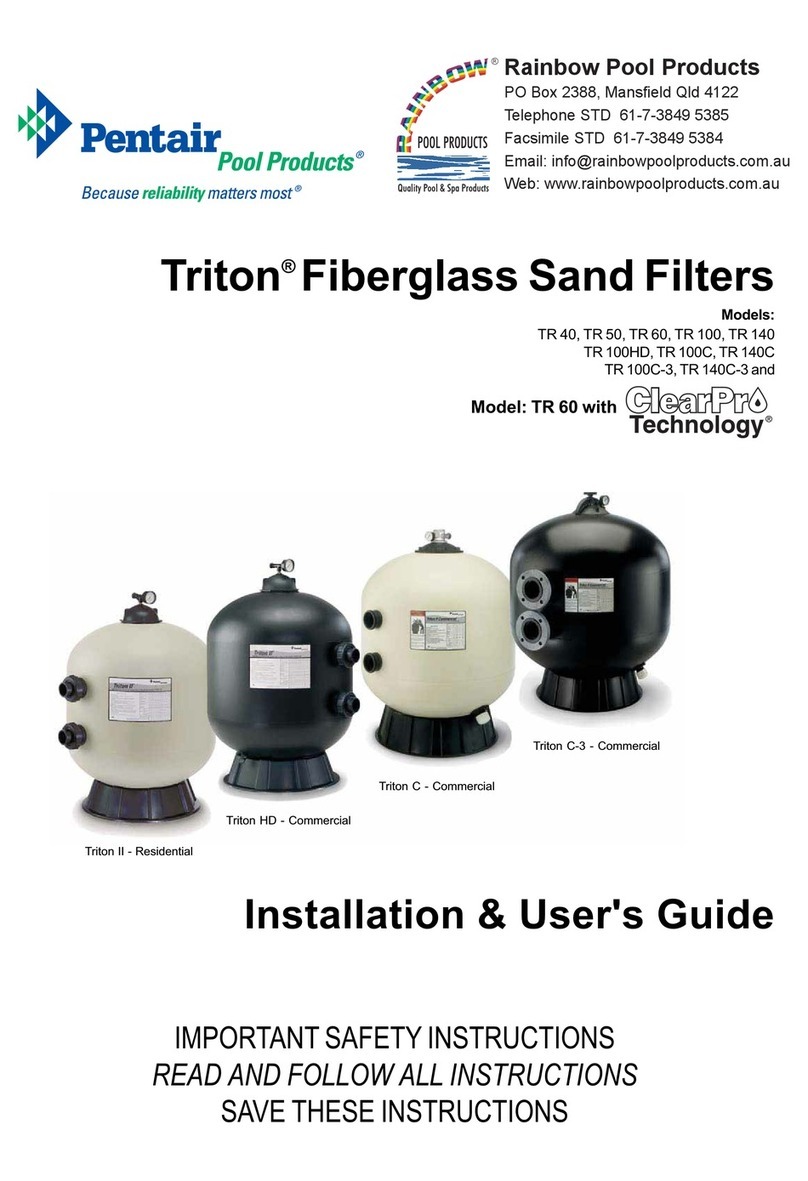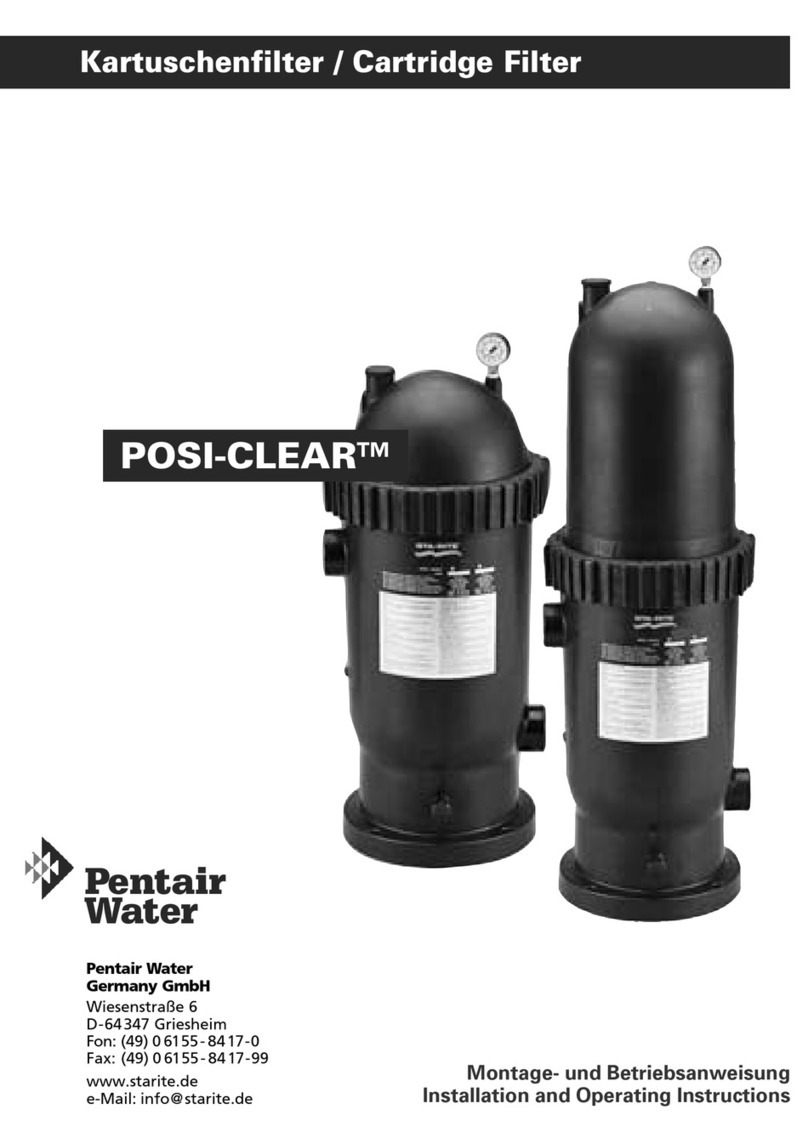
GENERAL PRECAUTIONS
Do not use with water that is
microbiologically unsafe or of unknown
quality without adequate disinfection before
or after the system.
CAUTION Filter must be protected against freezing which
can cause cracking of the lter and water
leakage.
Because of the product’s limited service life
and to prevent costly repairs or possible
water damage, we strongly recommend that
the bottom of all plastic housings be replaced
every ve years for clear and ten years for
opaque. If the bottom of your housing has been
in use for longer than this period, it should be
replaced immediately. Date the bottom of any
new or replacement housing to indicate the next
recommended replacement date.
NOTE: Your water must be within required limits for
satisfactory operation. If not, your membrane life
may be shortened and your warranty will be voided
(see Operating Specications).
NOTE: This reverse osmosis system will not protect
against disease-causing bacteria or remove
naturally-occurring harmless bacteria.
NOTE: Install on cold water line only.
NOTE: Do not use wicking or sealer to t connections into
the cap of the lter. Teon® tape is recommended.
NOTE: Make certain that installation complies with all state
and local laws and regulations.
NOTE: The replacement cartridges and reverse osmosis
membrane included with this system have limited
service lives. Changes in taste, odor, and color of
the water being ltered indicate that the cartridge
should be replaced (see Replacing the Pre- and
Postlters, and Replacing the Membrane).
NOTE: After prolonged periods of non-use (such as during
a vacation) it is recommended that the system be
ushed for 5 minutes before it is used.
NOTE: A drinking water cartridge may contain carbon
nes (very ne black powder). After installation,
ush the cartridge for 5 minutes to remove the
carbon nes before using the water.
NOTE: It is recommended that you run the tap at least
20 seconds prior to using water for drinking or
cooking purposes.
NOTE: The contaminants or other substances removed
or reduced by this water treatment device are not
necessarily present in your water.
NOTE: There are no user-serviceable parts in the AC
adapter or pump. In the event of a failure these
should be replaced.
NOTE: All electrical connections must be completed
according to local codes.
NOTE: Use only the power adapter that is supplied.
NOTE: The power outlet must be grounded. A ground fault
interrupter outlet is recommended.
RO MEMBRANE PRECAUTIONS
CAUTION Chlorine will destroy the TLC 75 membrane.
If you use the RO-2600 with a chlorinated or
periodically-chlorinated water supply, it is
ABSOLUTELY NECESSARY to use a carbon
prelter (included with the system). This carbon
prelter should be changed at least every 6
months to avoid chlorine bypass. See Warranty
for disclaimers and limitations that apply to the
TLC 75 membrane.
NOTE: To make sure no chlorine is present in the water
that reaches the membrane, you may want to use a
chlorine test kit to check the brine/reject water that
ows from the membrane to the drain. No chlorine
should be detected.
NOTE: The TLC 75 membrane is resistant to naturally-
occurring bacteria.
HOW REVERSE OSMOSIS (RO) WORKS
The RO-2600 Reverse Osmosis (RO) System uses a semi-
permeable membrane to reduce dissolved salts and minerals,
improving the taste and odor of your water. The RO membrane
is made of layers of micron-thin lm wound around a hollow
center core. Water molecules can pass through the membrane,
but dissolved salts and minerals are rejected.
The RO-2600 Reverse Osmosis System features 5-stage
lter action. Your water supply is preltered to reduce dirt and
chlorine that may foul the membrane. The RO membrane
separates this preltered water into PRODUCT WATER and
DRAIN or REJECT WATER. Incoming water pressure forces
the product water through the membrane and into the storage
tank. Dissolved solids and other contaminants cannot pass
through the membrane and are sent to the drain as reject
water. When you open the drinking water faucet, product water
is drawn from the storage tank through an activated carbon
postlter, providing you with cleaner, great-tasting water.
For each gallon of water produced, several gallons are
discharged as reject water. The storage tank can hold up to
12.1 L of water at a time, for drinking and cooking needs.
When used under the Specications on page 1 of the manual,
your Reverse Osmosis membranes should last 12-24 months.
2 • SE11 Model RO-2600 5 StageReverse Osmosis System
